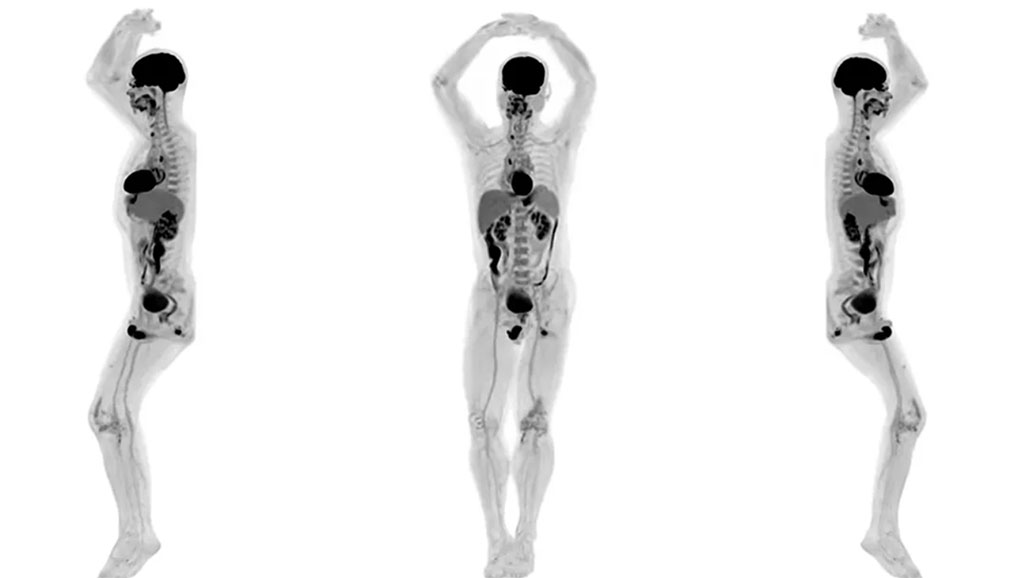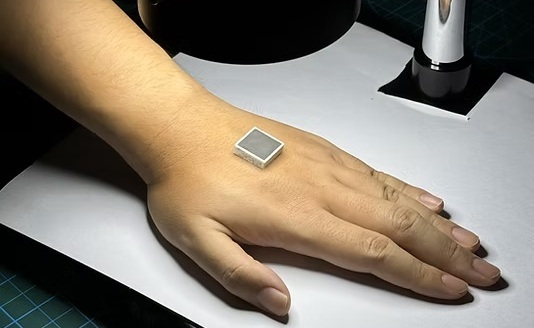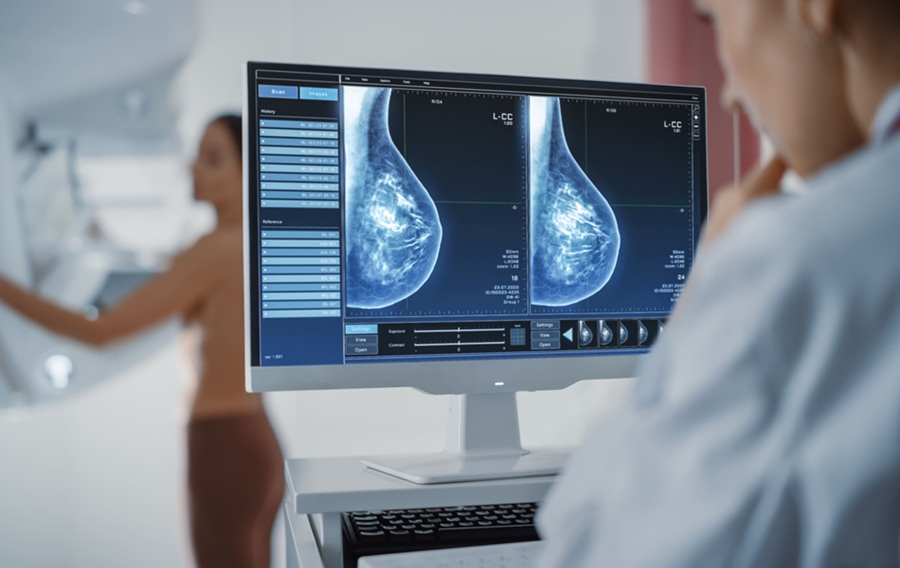PET Scans Show Dynamic Function of Multiple Organs
|
By MedImaging International staff writers Posted on 30 Jan 2020 |

Image: Full body PET/CT on the Explorer scanner (Photo courtesy of UCD)
A new study demonstrates a positron emission tomography (PET) image reconstruction method that helps researchers capture real-time videos of blood flow and heart function.
Researchers at the University of California Davis (UCD; USA) and Fudan University (Shanghai, China) have developed new methods to reduce noise and reconstruct video images from raw data of volunteers scanned by the Explorer, a full body PET and x-ray computed tomography (CT) scanner that can evaluate all body organs and tissues simultaneously. They were able to see changes on a scale of 100 milliseconds (one-tenth of a second), and use these to create high quality real-time movies of the scans.
For example, Explorer quantitatively measured blood flow, glucose uptake all over the body at the same time, cancer metastasis beyond the single tumor site, inflammation and infection, and immunological or metabolic disorders, as well as many other diseases. In one scan shown, a volunteer injected in with a short-lived radioactive tracer was scanned in real-time, showing the tracer moving up the body to the heart, flowing through the right ventricle to the lungs, back through the left ventricle and on to the rest of the body. Another video shows heart motion and cardiac contraction with clear delineation of the end-systolic and end-diastolic phases. The study was published on January 20, 2020, in Proceedings of the National Academy of Sciences (PNAS).
“It's a combination of the scanner and advanced data reconstruction methods that make this possible. The tradeoff between image quality, acquisition time, and injected radiation dose will vary for different applications,” said lead author Xuezhu Zhang , PhD, of UCD. “This has applications in real-time tracking of blood flow over the human circulatory system, motion-frozen heart beating, and breathing monitoring for cardiovascular and cerebrovascular disease and analysis of respiratory system function.”
PET is a nuclear medicine imaging technique that produces a 3D image of functional processes in the body. The system detects pairs of gamma rays emitted indirectly by a positron-emitting radionuclide tracer. Tracer concentrations within the body are then constructed into a 3D image by computer analysis. In modern PET-CT scanners, 3D imaging is often accomplished with the aid of a CT X-ray scan performed on the patient during the same session, in the same machine.
Related Links:
University of California Davis
Fudan University
Researchers at the University of California Davis (UCD; USA) and Fudan University (Shanghai, China) have developed new methods to reduce noise and reconstruct video images from raw data of volunteers scanned by the Explorer, a full body PET and x-ray computed tomography (CT) scanner that can evaluate all body organs and tissues simultaneously. They were able to see changes on a scale of 100 milliseconds (one-tenth of a second), and use these to create high quality real-time movies of the scans.
For example, Explorer quantitatively measured blood flow, glucose uptake all over the body at the same time, cancer metastasis beyond the single tumor site, inflammation and infection, and immunological or metabolic disorders, as well as many other diseases. In one scan shown, a volunteer injected in with a short-lived radioactive tracer was scanned in real-time, showing the tracer moving up the body to the heart, flowing through the right ventricle to the lungs, back through the left ventricle and on to the rest of the body. Another video shows heart motion and cardiac contraction with clear delineation of the end-systolic and end-diastolic phases. The study was published on January 20, 2020, in Proceedings of the National Academy of Sciences (PNAS).
“It's a combination of the scanner and advanced data reconstruction methods that make this possible. The tradeoff between image quality, acquisition time, and injected radiation dose will vary for different applications,” said lead author Xuezhu Zhang , PhD, of UCD. “This has applications in real-time tracking of blood flow over the human circulatory system, motion-frozen heart beating, and breathing monitoring for cardiovascular and cerebrovascular disease and analysis of respiratory system function.”
PET is a nuclear medicine imaging technique that produces a 3D image of functional processes in the body. The system detects pairs of gamma rays emitted indirectly by a positron-emitting radionuclide tracer. Tracer concentrations within the body are then constructed into a 3D image by computer analysis. In modern PET-CT scanners, 3D imaging is often accomplished with the aid of a CT X-ray scan performed on the patient during the same session, in the same machine.
Related Links:
University of California Davis
Fudan University
Latest General/Advanced Imaging News
- AI-Based Tool Accelerates Detection of Kidney Cancer
- New Algorithm Dramatically Speeds Up Stroke Detection Scans
- 3D Scanning Approach Enables Ultra-Precise Brain Surgery
- AI Tool Improves Medical Imaging Process by 90%
- New Ultrasmall, Light-Sensitive Nanoparticles Could Serve as Contrast Agents
- AI Algorithm Accurately Predicts Pancreatic Cancer Metastasis Using Routine CT Images
- Cutting-Edge Angio-CT Solution Offers New Therapeutic Possibilities
- Extending CT Imaging Detects Hidden Blood Clots in Stroke Patients
- Groundbreaking AI Model Accurately Segments Liver Tumors from CT Scans
- New CT-Based Indicator Helps Predict Life-Threatening Postpartum Bleeding Cases
- CT Colonography Beats Stool DNA Testing for Colon Cancer Screening
- First-Of-Its-Kind Wearable Device Offers Revolutionary Alternative to CT Scans
- AI-Based CT Scan Analysis Predicts Early-Stage Kidney Damage Due to Cancer Treatments
- CT-Based Deep Learning-Driven Tool to Enhance Liver Cancer Diagnosis
- AI-Powered Imaging System Improves Lung Cancer Diagnosis
- AI Model Significantly Enhances Low-Dose CT Capabilities
Channels
Radiography
view channel
AI Detects Early Signs of Aging from Chest X-Rays
Chronological age does not always reflect how fast the body is truly aging, and current biological age tests often rely on DNA-based markers that may miss early organ-level decline. Detecting subtle, age-related... Read more
X-Ray Breakthrough Captures Three Image-Contrast Types in Single Shot
Detecting early-stage cancer or subtle changes deep inside tissues has long challenged conventional X-ray systems, which rely only on how structures absorb radiation. This limitation keeps many microstructural... Read moreMRI
view channel
Novel Imaging Approach to Improve Treatment for Spinal Cord Injuries
Vascular dysfunction in the spinal cord contributes to multiple neurological conditions, including traumatic injuries and degenerative cervical myelopathy, where reduced blood flow can lead to progressive... Read more
AI-Assisted Model Enhances MRI Heart Scans
A cardiac MRI can reveal critical information about the heart’s function and any abnormalities, but traditional scans take 30 to 90 minutes and often suffer from poor image quality due to patient movement.... Read more
AI Model Outperforms Doctors at Identifying Patients Most At-Risk of Cardiac Arrest
Hypertrophic cardiomyopathy is one of the most common inherited heart conditions and a leading cause of sudden cardiac death in young individuals and athletes. While many patients live normal lives, some... Read moreUltrasound
view channel
Wearable Ultrasound Imaging System to Enable Real-Time Disease Monitoring
Chronic conditions such as hypertension and heart failure require close monitoring, yet today’s ultrasound imaging is largely confined to hospitals and short, episodic scans. This reactive model limits... Read more
Ultrasound Technique Visualizes Deep Blood Vessels in 3D Without Contrast Agents
Producing clear 3D images of deep blood vessels has long been difficult without relying on contrast agents, CT scans, or MRI. Standard ultrasound typically provides only 2D cross-sections, limiting clinicians’... Read moreNuclear Medicine
view channel
PET Imaging of Inflammation Predicts Recovery and Guides Therapy After Heart Attack
Acute myocardial infarction can trigger lasting heart damage, yet clinicians still lack reliable tools to identify which patients will regain function and which may develop heart failure.... Read more
Radiotheranostic Approach Detects, Kills and Reprograms Aggressive Cancers
Aggressive cancers such as osteosarcoma and glioblastoma often resist standard therapies, thrive in hostile tumor environments, and recur despite surgery, radiation, or chemotherapy. These tumors also... Read more
New Imaging Solution Improves Survival for Patients with Recurring Prostate Cancer
Detecting recurrent prostate cancer remains one of the most difficult challenges in oncology, as standard imaging methods such as bone scans and CT scans often fail to accurately locate small or early-stage tumors.... Read moreImaging IT
view channel
New Google Cloud Medical Imaging Suite Makes Imaging Healthcare Data More Accessible
Medical imaging is a critical tool used to diagnose patients, and there are billions of medical images scanned globally each year. Imaging data accounts for about 90% of all healthcare data1 and, until... Read more
Global AI in Medical Diagnostics Market to Be Driven by Demand for Image Recognition in Radiology
The global artificial intelligence (AI) in medical diagnostics market is expanding with early disease detection being one of its key applications and image recognition becoming a compelling consumer proposition... Read moreIndustry News
view channel
GE HealthCare and NVIDIA Collaboration to Reimagine Diagnostic Imaging
GE HealthCare (Chicago, IL, USA) has entered into a collaboration with NVIDIA (Santa Clara, CA, USA), expanding the existing relationship between the two companies to focus on pioneering innovation in... Read more
Patient-Specific 3D-Printed Phantoms Transform CT Imaging
New research has highlighted how anatomically precise, patient-specific 3D-printed phantoms are proving to be scalable, cost-effective, and efficient tools in the development of new CT scan algorithms... Read more
Siemens and Sectra Collaborate on Enhancing Radiology Workflows
Siemens Healthineers (Forchheim, Germany) and Sectra (Linköping, Sweden) have entered into a collaboration aimed at enhancing radiologists' diagnostic capabilities and, in turn, improving patient care... Read more










 Guided Devices.jpg)








